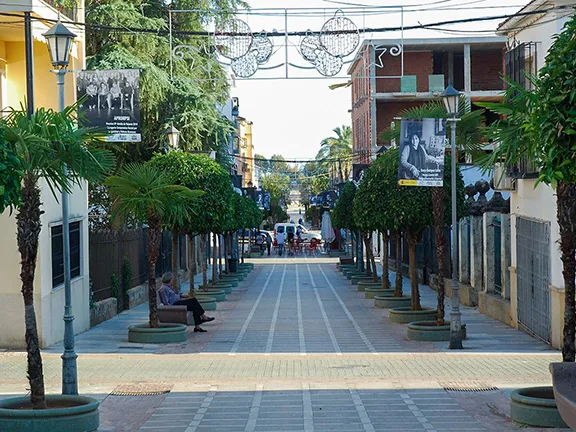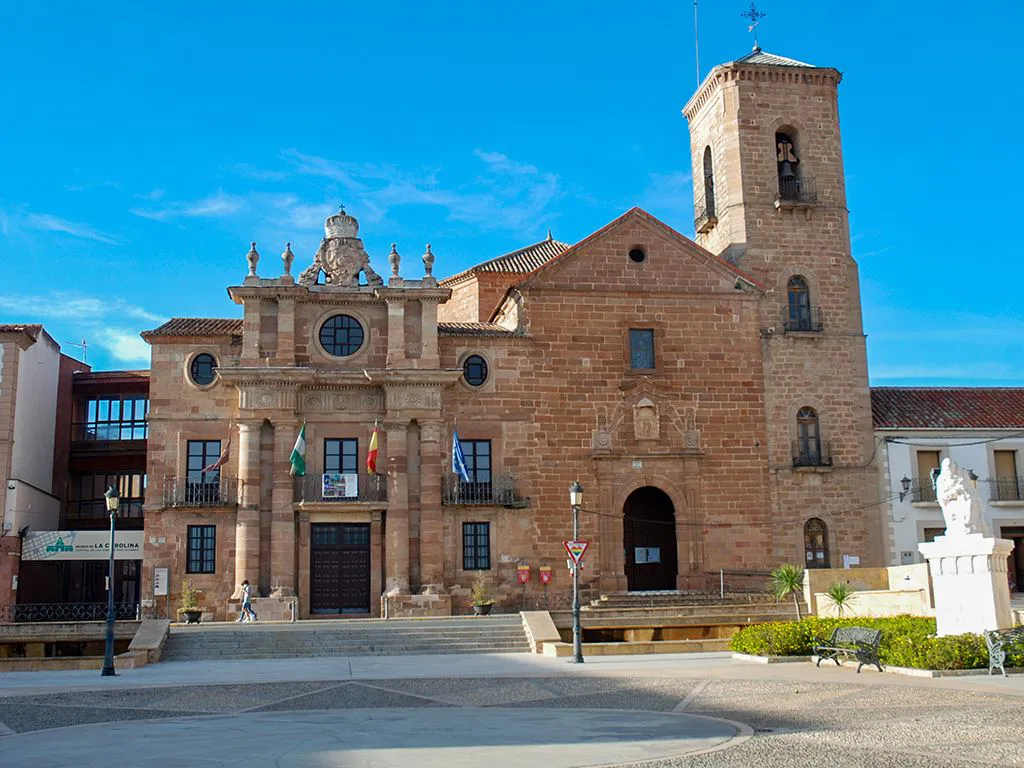Guide to La Carolina in Jaen province, a mining town in the Sierra Morena near the Despeñaperros gorge
By Nick Nutter | Updated 16 Mar 2022 | Jaén | Villages |
Login to add to YOUR Favourites or Read Later


Monument to the Battle of Tolosa
In 1767, an ambitious plan to repopulate certain areas within Andalucia was promulgated by order of King Charles III. The areas chosen were all, for one reason or another, disadvantaged. The town of La Carolina was founded to populate the land surrounding the Despeñaperros gorge, also known as ‘the gateway to Andalucia’, due to its position on the border between Andalucia and Castile la Mancha, on the Royal Road between Cadiz and Madrid. The gorge was notorious for its bandits and highwaymen.


Since the reputation of the area was well known to the Spanish, potential colonists had to be cajoled from further afield. With incentives of free land and a gift of five chickens, five goats, five sheep, two cows and a sow per family, six thousand settlers arrived from Belgium, Germany, Austria and Switzerland. About half survived the first few years and became integrated into the area. As a result of its late start and northern European influence, La Carolina does not feel like a particularly Spanish town. The streets are set out in a grid pattern, the main streets are broad, tree lined, boulevards, and the houses have gables and low, peaked rooves.


The main road into town, Calle Madrid, takes you into the Plaza de las Delicias and then through a pair of 18th century towers into Plaza Aduana. Back in the day, this is where customs dues were paid that entitled merchants to carry their goods up the Royal highway. Calle Madrid continues like a ruler and next takes you through the Plaza de los Jardinillos, an unusual, hexagonally shaped plaza, with formal gardens. Off to the north from here is the historical centre of the town, Plaza de la Iglesia with the Iglesia de la Inmaculada Concepción on the northern side. The statue in front of the church is of the patron saint of the town, Saint John of the Cross, and is a recent addition, having been created in 1961.


Mining museum
Round about now you will probably realise that you have not seen the plethora of restaurants and cafes that surround the traditional Spanish plaza. The town does have restaurants but they tend to be tucked away down side streets. If you do eat in town, one of the specialities is partridge in a bean stew. Quite delicious.


Despenaperros Parque Natural
Also in Plaza de la Iglesia you will find the Centro de Interpretación de la Historia de la Minería en las Nuevas Poblaciones de Jaen. The Interpretation Centre for the History of Mining in the new towns of Jaen. The whole area is studded with mines that have been exploited since pre-Roman times. This modern museum looks at the metallic ore rich Sierra Morena and traces the history of mining in the area from pre-Roman times to the 20th century. As you would expect from a mining museum, there is a good display of minerals.


Despenaperros gorge
Just outside La Carolina, to the north, is the hamlet of Navas de Tolosa. It is thought that the Battle of Las Navas de Tolsa was fought in this vicinity. In 1211 AD, the Almohad caliph, Muhammad al-Nasir, crossed the Gibraltar Strait with a powerful army. He invaded Christian territory and captured Salvatierra Castle, the headquarters of the Order of Calatrava some 50 kilometres north of La Carolina. He was seen as such a threat to the Christian kingdoms that Pope Innocent III called European Knights to a crusade. Knights from Castile, Aragon, Navarre, the Order of Santiago, Order of Calvatara, Knights Templar, Knights Hospitalier, Portugal and France formed a coalition under Alfonso VIII and marched on al-Nasir’s positions. In order to do so they had to sneak through the Despañaperros Pass, evading the lookouts posted by el-Nasir. The coalition was led through by a shepherd boy, Martin Alhaja, who was later honoured for his work. The battle, a victory for the Christian forces, is considered the turning point of the reconquest. Alhaja, together with the notable leaders of the Christian forces, Kings Alfonso of Castille, Pedro of Aragon and Sancho of Navarra, are remembered today at a monument on a roundabout as you enter La Carolina north.
Travel north from La Carolina on the old Royal highway, now the A4. In ten kilometres the road climbs into the Parque Natural de Despeñaperros and thence through the gorge that marks the boundary between Andalucia and Castile la Mancha. The Parque Natural de Despeñaperros is one of the smallest nature parks famous for its canyons and gorges. A walk called the Empedraillo Trail allows visitors to see the highlights of the park.